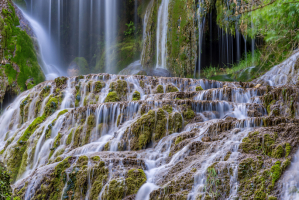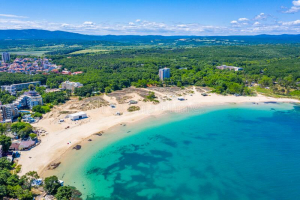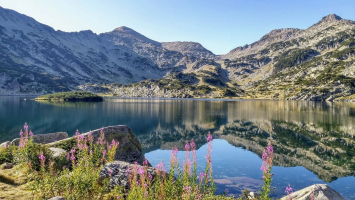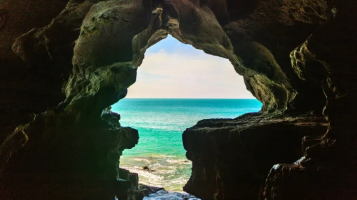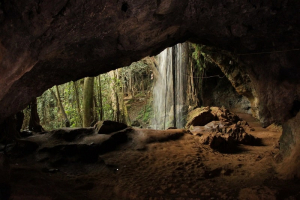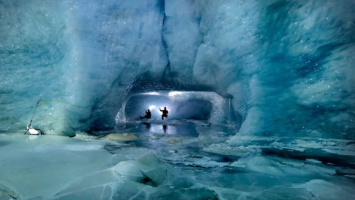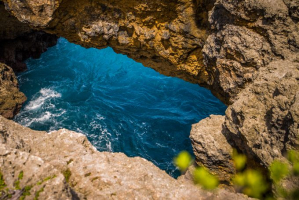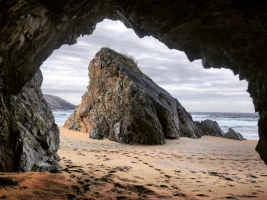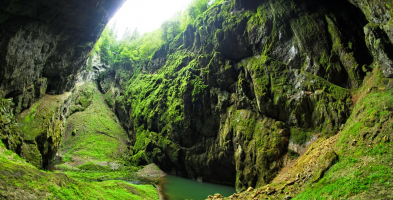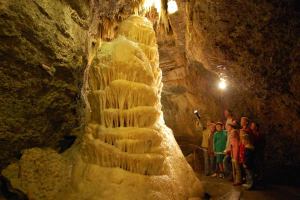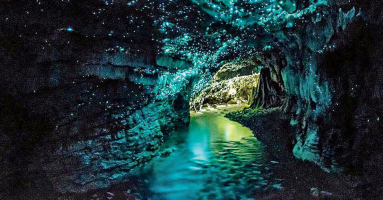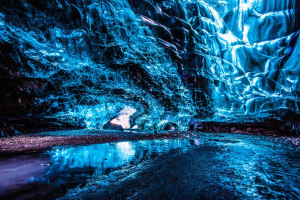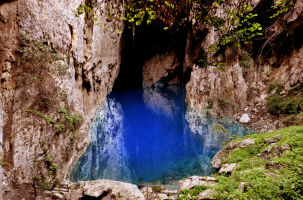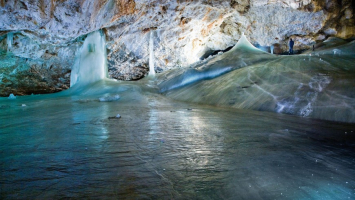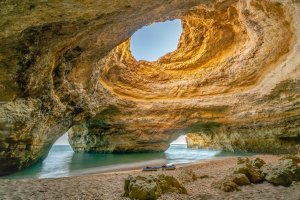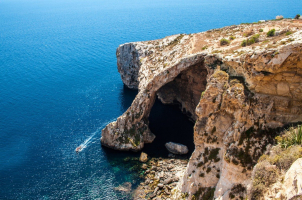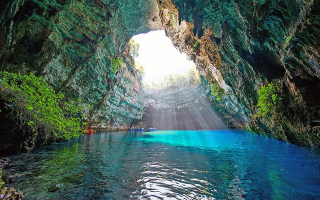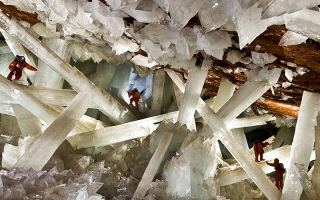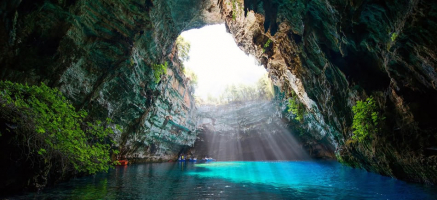Top 12 Most Beautiful Caves in Bulgaria
Due to Bulgaria's rugged geography, there are several caves to be found around the nation. So far, over 4500 have been discovered, with many more believed to ... read more...be waiting to be discovered by an adventurous explorer. Beautiful stalactite and stalagmite formations, treasures from the dawn of human history, and practically every species of bat native to Europe may all be found inside Bulgaria's caves. Here are 12 of the most beautiful caves in Bulgaria that we think are the most interesting, beautiful, or road trip worthy.
-
The Magura Cave, located in northeastern Bulgaria, is one of the country's largest and most beautiful caves in Bulgaria. It's in Rabisha, about 23 kilometers from Belogradchik, which has Bulgaria's most beautiful castle.
The cave is famous for the prehistoric wall murals that can be found in one of the halls. The prehistoric wall paintings of Magura are strikingly similar to those of the Grotta dei Cervi in Italy, which are regarded the most important works of art of the European Post-Paleolithic age for its remarkable expression and creative depth. They represent dancing women, hunting men, tools, stars, planets, and animals and are between 10,000 and 8,000 years old. Many prehistoric creatures' bones, including cave hyenas, cave bears, otters, and wolves, have been discovered here. The UNESCO Tentative List of World Heritage Sites includes the Magura Cave.
The staff of the Belogradchik municipality, to which the cave's management was passed by the Bulgarian Council of Ministers in 2012, conducts guided tours.
Region: Vidin Province, Bulgaria
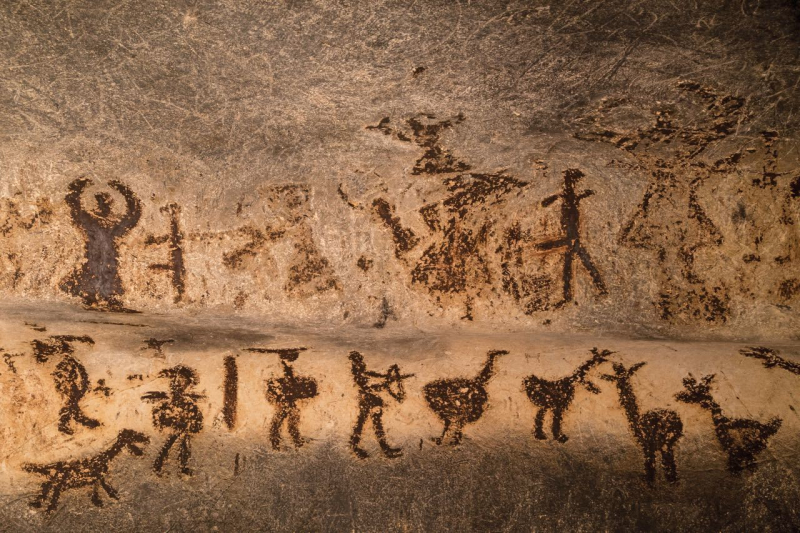
Photo: researchgate 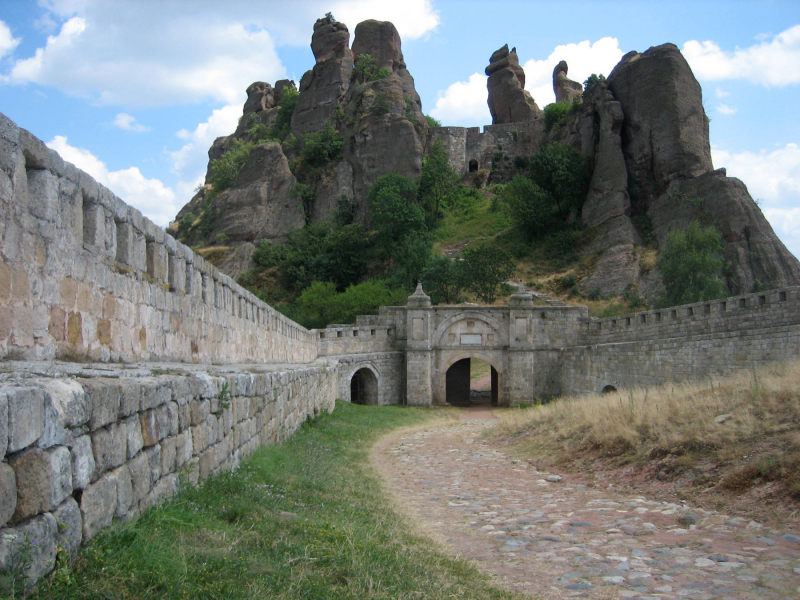
Photo: showcaves -
The Devil's Throat Cave is 17 kilometers from Devin in the Western Rhodopes. It's one of the caves that doesn't have dazzlingly beautiful rock formations. The prospect of going on a true adventure of discovery, taking part in a strange and awe-inspiring underground country, fascinates visitors. The cave's entrance resembles a devil's head, and a tremendous waterfall cascades down its throat, captivating imaginations and inspiring various legends since ancient times.Orpheus descended this opening to the underground kingdom of Hades in search of his lost love Eurydice, according to the most common version. Without branching in either direction, the cave descends straight down. The Trigrad River's water cascades down the cave's "throat" from a height of 42 meters, making it the Balkan Peninsula's highest underground waterfall. The cavern into which the waterfall falls is known as The Hall of Thunder because of the cascade's muffled roar. It's massive – Bulgaria's second-largest cavern. The water disappears via a funnel around 400 meters from the entrance. This funnel is more than 150 meters deep, and the underground river exits the cave and runs out amid the mountain peaks through another cave after emerging from the funnel into a 60-meter-long cavern.
The fact that nothing carried into The Devil's Mouth Cave by the river returns is a startling reality. Many attempts have been made to follow wood and other materials through the cave, but they invariably vanish without a trace in the underground river, piquant interest and teasing the imagination. Experiments with dyes have revealed that it takes more than 112 hours for water to travel the short distance between two openings, prompting assumptions about the cave's huge subsurface stream system.
Late spring and summer are the greatest times to come to The Devil's Throat Cave, when the cave's entrance is surrounded by energizing vegetation and the Rhodopes are at their most attractive. From the beginning of May to the end of October, the local spelunkers' club conducts boat descents into the caves. The club supplies all the essential equipment, including boats, life jackets, and life rafts.
Region: Trigrad, Bulgaria
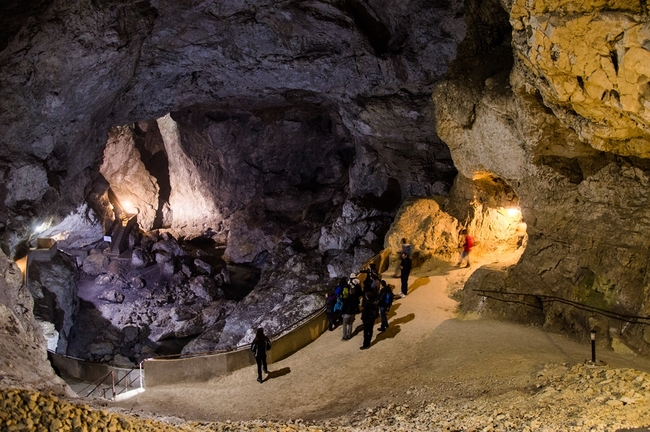
Photo: different-journey 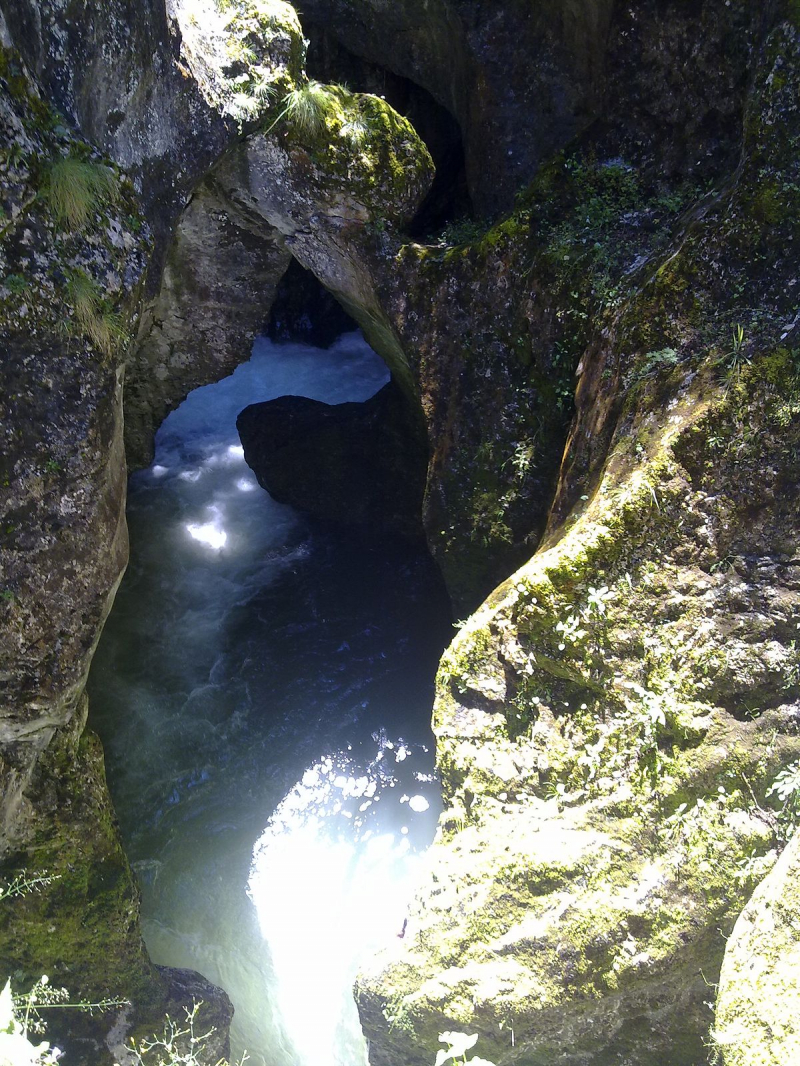
Photo: wikipedia -
The Yagodina Cave is located near the Rhodope town of Yagodina in the Buynovo Gorge. It is one of Bulgaria's most well-known and frequented caverns. Its galleries stretch for 8,501 meters, making it Bulgaria's fourth-longest cave and the longest in the Rhodopes. The cave is kept at a constant temperature of 6 to 8 degrees throughout the year, with a humidity of more than 90%. (as do most caves).
The Yagodina Cave is a multi-leveled marble cave complex. The cave's lowest level has been constructed, but there are two more levels connected to it. Two artificial apertures serve as entrances and exits for the tourist path. The cave's natural outlet lies a kilometer further down the Buynovo River, where Neolithic (both Stone and Bronze Age) items have been uncovered. Earthenware dishes, labor utensils, and an earthenware oven are among the discoveries. According to studies, the skilled potters who resided in this area obtained clay from the cave. After being excavated and rebuilt, the cave mouth was made into a museum exhibit.
Aside from the regular tourist trail, Rhodope Tourist Association guides lead tours through the Yagodina Cave's untamed, unexplored galleries. These portions of the cave, which require specific equipment to explore, offer strange and enticing vistas that are concealed from most visitors. Excursions to the Yagodina Cave's lighted areas are extreme tourism that needs strength and stamina, but the stunning views are well worth the effort.
Region: Yagodina, Bulgaria
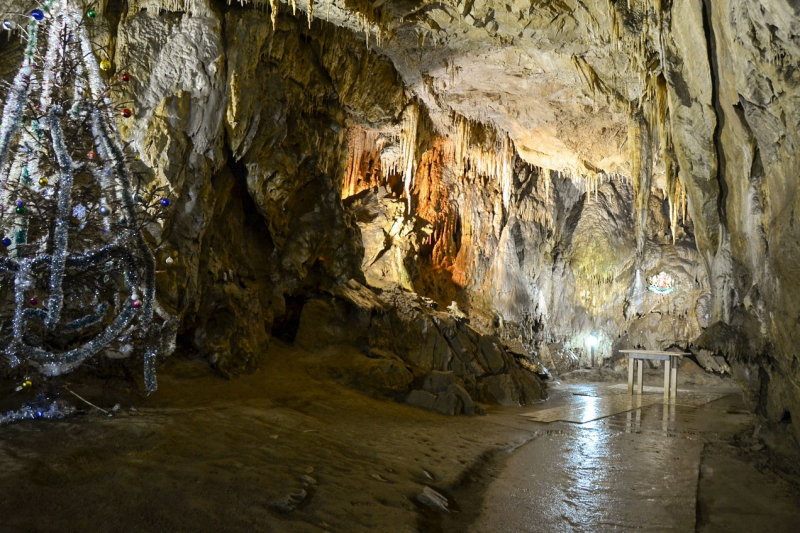
Photo: stream-bgproperties 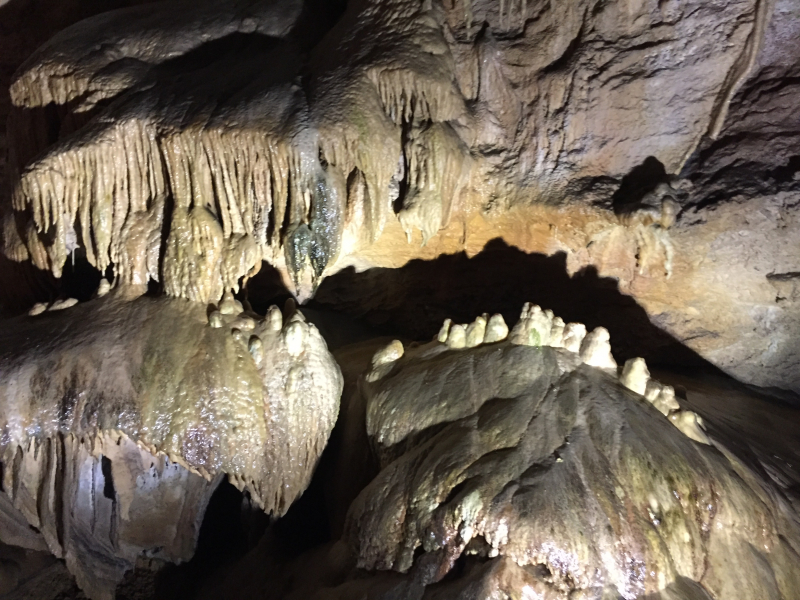
Photo: redisforroses -
Snezhanka is one of the most beautiful caves in Bulgaria. It is also known as the Rhodopes' Pearl and is one of Bulgaria's 100 Tourist Sites. Ordinance No. 512 of 14 March 1961 designated it as a natural landmark. In its 145 m length, the cave contains a diverse range of cave formations. It is located 5 kilometers from Peshtera in the direction of Batak.
The Novomahlenska River carved out the cave (New Quarter River). It was inhabited by ancient Thracians circa 600 BC, according to artifacts recovered there. It was then abandoned and forgotten, only to be found in 1961 by tourists.
Although the cave is modest, it is abundant in natural cave decorations such as stalactites, stalagmites, sinter lakes, and flow stones. The name comes from the strangely shaped snow-white deposits that took millions of years to create, such as the Dolphin, the Sarakatsan, the Statue of Liberty, the Dwarfs, the Parrot, and Snow White herself — a maiden-shaped stalagmite waiting for her prince to arrive. The cave has various lovely rooms, including the Udder Room, the Big Room, and the Music Room, which are all connected to the Cave-in, which is under a bridge.
The cave is well-developed and open to the public on a daily basis. Near the entrance, there is a tea café and a souvenir kiosk. Every hour, new groups of visitors are formed. Taking photos is not permitted within the cave. The cave is under camera surveillance 24 hours a day, 7 days a week.
Region: Rhodope Mountains, Bulgaria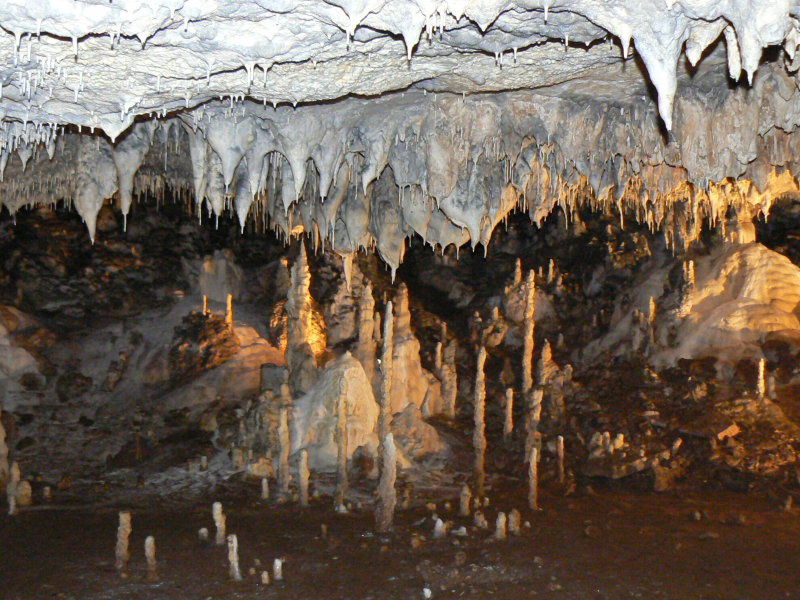
Photo: wikipedia 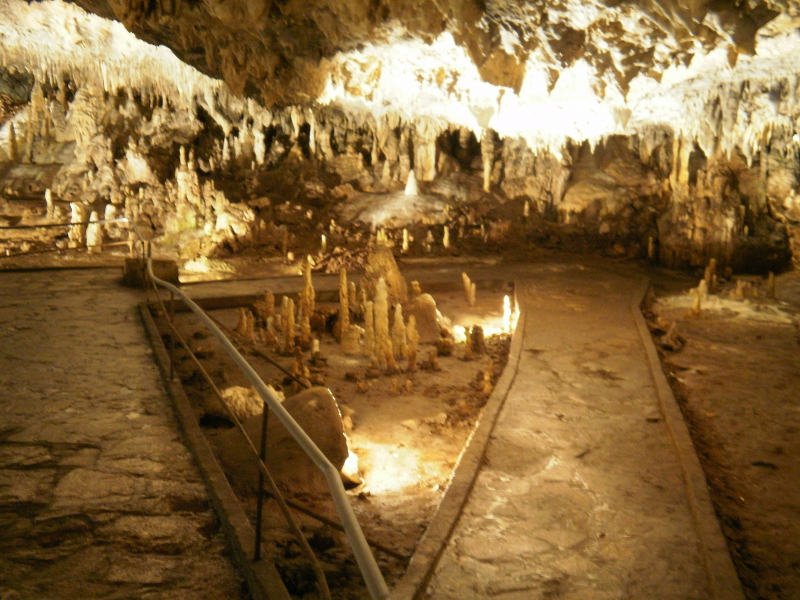
Photo: commons.wikimedia -
Although it is not Bulgaria's most frequented cave, Uhlovitsa Cave offers some thrilling underground adventure. This cave is located near Mogilitsa in the Smolyan Province and is another Rhodope Mountains cave. The cave is 460 meters long, however only 330 meters may be explored by tourists.
After a hard 30-to-40-minute trek, you'll arrive at the entryway (which might explain why only a few thousand people visit this cave each year). Those who make the effort to visit will discover an underground paradise. It is sometimes referred to as a "subterranean palace" because of its numerous stalagmites, stalactites, helicopters, dendrites, a magnificent flowing tone pattern, and even stone waterfalls.
Region: Uhlovitsa, Bulgaria
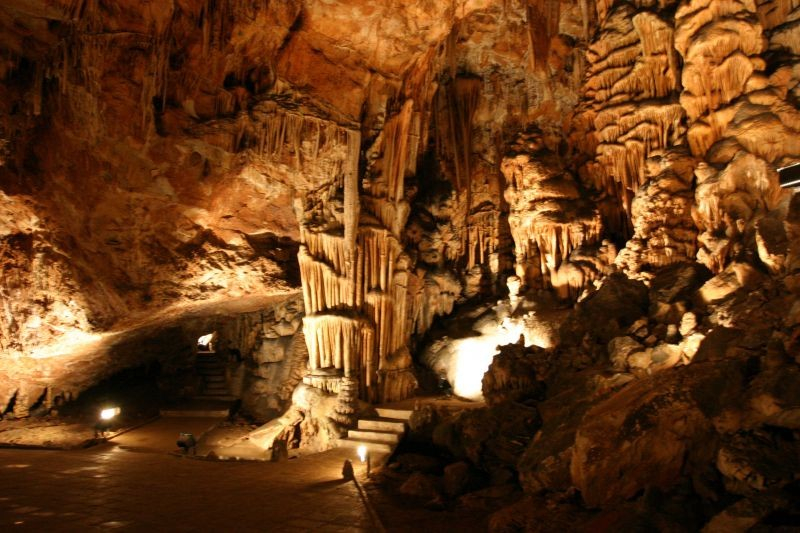
Photo: bnr.bg 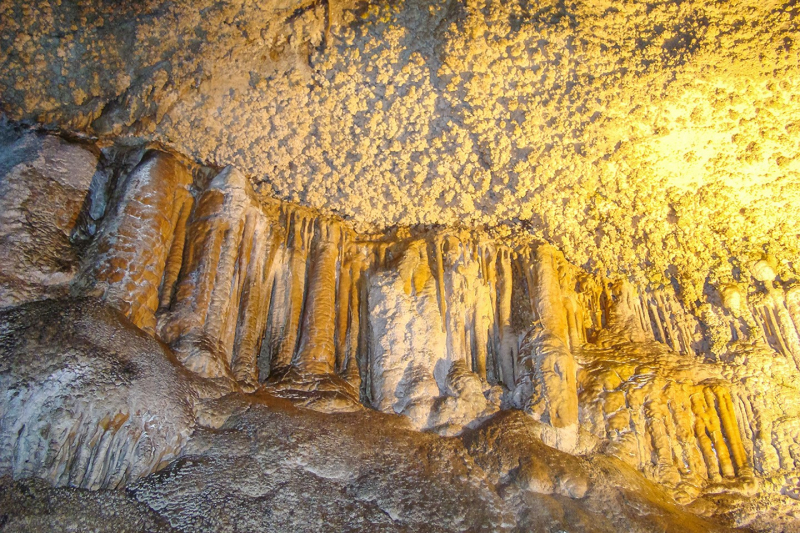
Photo: stream-bgproperties -
Bacho Kiro is one of numerous caves in north-central Bulgaria, located 6 kilometers from Dryanovo. The St. Archangel Michael Monastery at Dryanovo is only 300 meters away. It has been open to the public since 1937, and is named for Bulgarian Revival leader and revolutionary Bacho Kiro.
Because of its plethora of cave formations, Bacho Kiro Cave is one of the top Bulgaria caves to see. Its inside is a labyrinth of passageways, galleries, hallways, and halls sculpted over thousands of years by rivers. The cave is approximately 3.6 kilometers long, with 700 meters accessible to guests and equipped with electric lighting. Bacho Kiro Cave can be accessed by two distinct routes. The short route takes about 30 minutes, while the longer option is 70 minutes long.
Region: Yambol Center, Yambol, Bulgaria
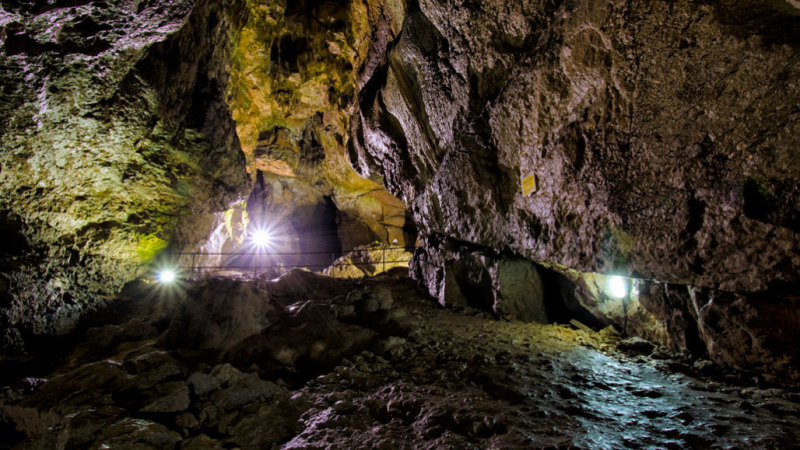
Photo: sciencenews 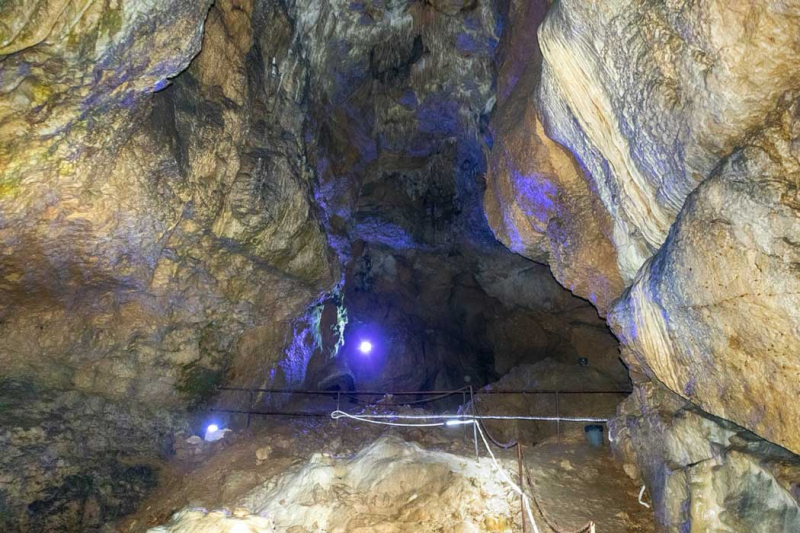
Photo: ancient-origins. -
Ledenika is a cave located 16 kilometers from Vratsa, Bulgaria, in the Northwestern Balkan Mountains. Its entrance is located at an elevation of roughly 830 meters above sea level. There are numerous galleries and magnificent karst formations, including stalactites and stalagmites, throughout the cave. It was discovered at the turn of the twentieth century and has been open to visitors since 1961. In honor of the cave's cultural significance, Ledenika Peak on Graham Land in Antarctica was named after it.
The cave is around 300 meters long and has ten different chambers. Visitors enter the Concert Hall from the Antechamber, then travel through many smaller corridors. Visitors then travel through a series of smaller hallways before arriving at the White House.
The Great Temple is the largest gallery, with a ceiling height of 15 meters (50 ft). Although the Concert Hall is smaller, it contains numerous stalactites and stalagmites. Icicles may form on the ceiling during the winter. The cave's name, which translates as ice or glacial in English, is supposed to have been inspired by the quantity of icicles in the winter.Region: Northwestern of Bulgaria
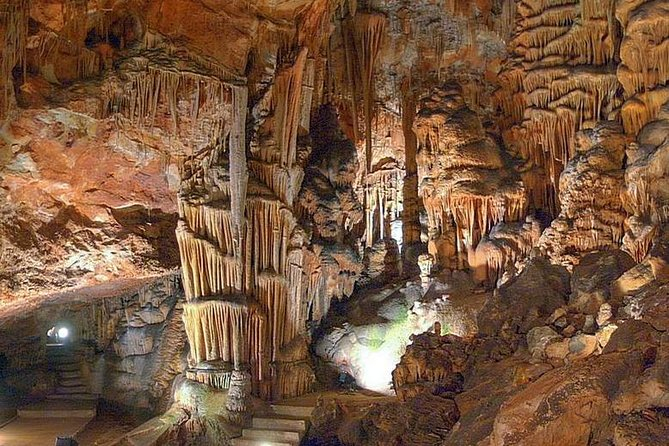
Photo: viator 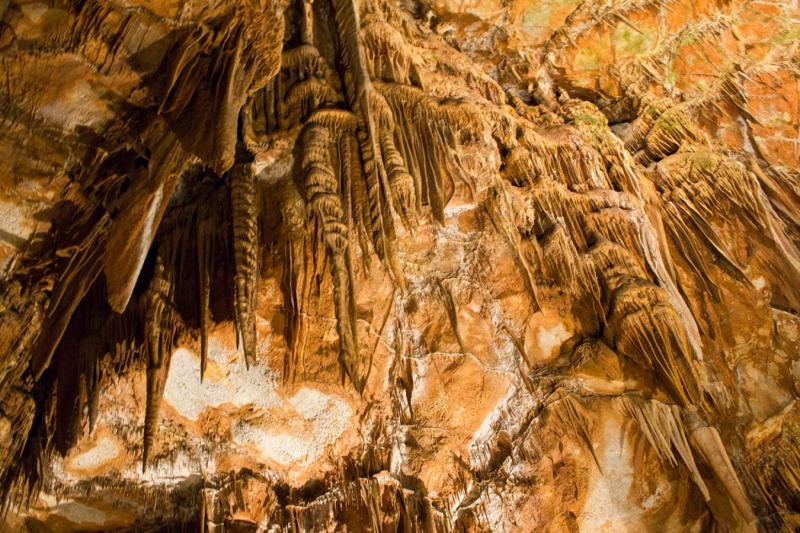
Photo: machirski -
The Prohodna Cave, located 2 kilometers from Karlukovo in north-central Bulgaria, is one of Bulgaria's largest and most accessible caves. It's a prominent feature in the Karlukovo Gorge, which is part of the Iskar-Panega Geological Park and is one of the country's greatest kart sites.
Prohodna Cave is a tunnel cave with a length of 262 meters, making it Bulgaria's longest of its kind. The Big Entrance and the Small Entrance are located at opposite ends of the building. The former is at least 45 meters high, making it Bulgaria's largest cave vault, large enough for bungee jumping. The cave's name, which translates to "Passage Cave," reflects its shape.
There are also two massive nearby holes in the ceiling that look like a pair of enormous eyeballs. This is the most well-known feature of Prohodna Cave, also known as Oknata in the locality.
Region: Lovech Province, Bulgaria
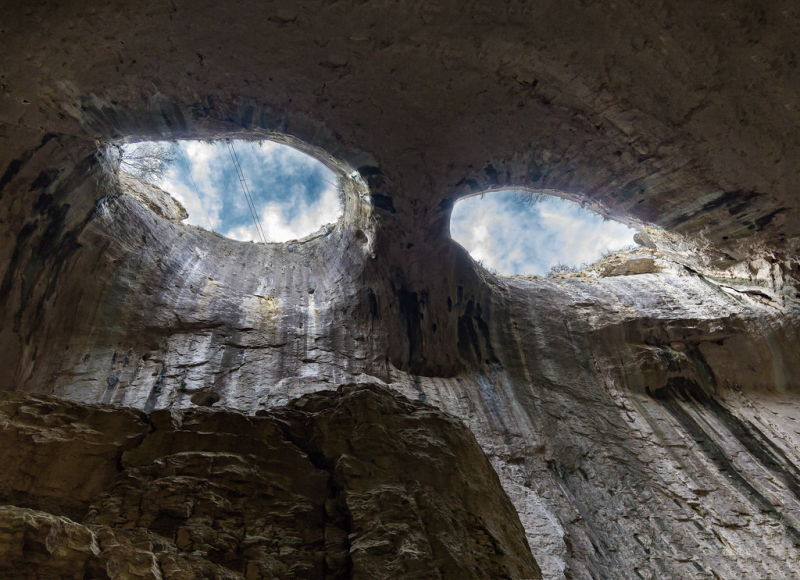
Photo: flickr 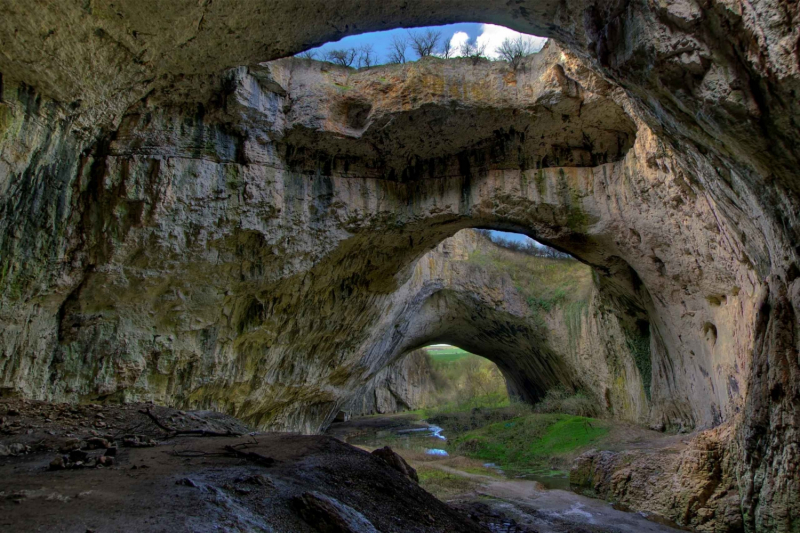
Photo: myguidebulgaria -
The Western Rhodopes' Lepenitsa Cave is located below Syutkya Peak (2186 m), 10 kilometers southwest of Rakitovo and 11 kilometers south of Velingrad. It is 1525 meters long, 975 meters above sea level, and has a vertical drop of 10 meters. The cave is accessible from both Rakitovo and Velingrad.
Lepenitsa Cave is divided into three floors. A 273-meter-long underground river runs through the lowest level. When it rains, four lakes appear on the second level, but there are only two in dry times. The third level is completely dry, although it is inaccessible. The cave is breathtakingly gorgeous, with an abundance of stalagmites, stalactites, and columns. It was discovered with amazing cave pearls. They are now on display in Sofia's Museum of Natural History.
The cave wildlife is diverse and fascinating. So far, 24 animal species have been identified as inhabiting the cave, with six of them being troglobites (living only in caves). Lepenitsa Cave is home to six different varieties of bats. The cave has a temperature of roughly 10° C.
The cave is again a tourist attraction after being closed to tourists for more than 50 years. In 1960, it was designated as a tourist attraction. Tourists can only enter the cave in groups of no more than ten individuals, guided by a guide and wearing protective equipment. Inside the cave, guests are only permitted to travel along pre-determined paths. The cave forbids smoking, drinking, and the use of opioids. It is also forbidden to touch or break cave structures.
Region: Rakitovo, Bulgaria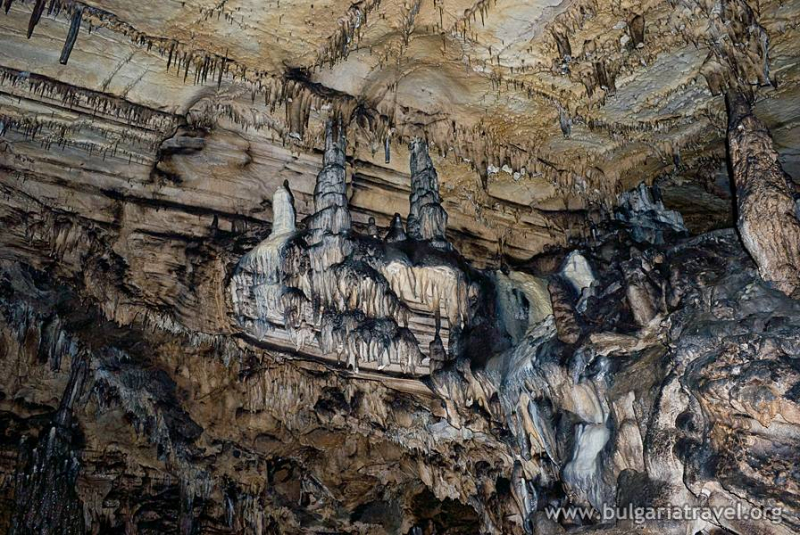
Photo: bulgariatravel 
Photo: igotoworld -
Saeva Dupka is a cave in Northern Bulgaria near the village of Brestnitsa, Lovech Province, belong to one of the most beautiful caves in Bulgaria, is located near Brestnitsa in the Lovech area. It consists of five subterranean chambers connected by hundreds of meters of corridors. It's the ideal site for cave-loving travelers, as it's well illuminated and virtually wholly accessible.
Sayu and Seyu, two brothers who found safety in this cave during the Ottoman conquest, gave the cave its name. Evidence implies, however, that people have lived here, or at the very least used it, since Roman times. Saeva Dupka Cave's greatest claim to fame is its incredible acoustics. The Harmana Hall hosts concerts on a regular basis.
The cave comprises 400 meters of natural passageways and rooms. Because of the outstanding acoustics, the cave has held many Choral music events.
Region: Lovech Province, Bulgaria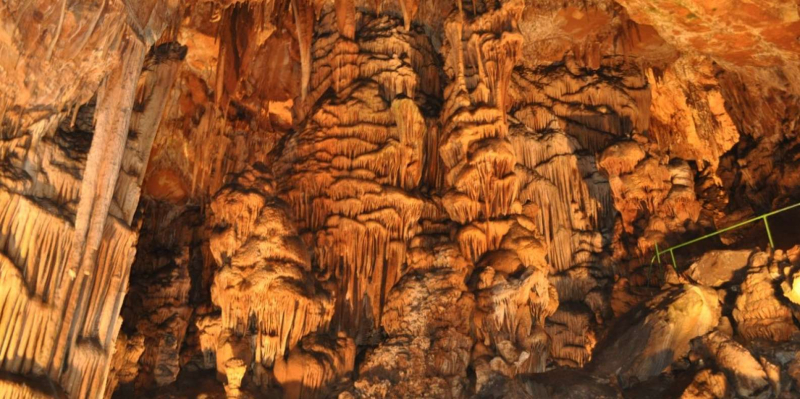
Photo: getyourguide 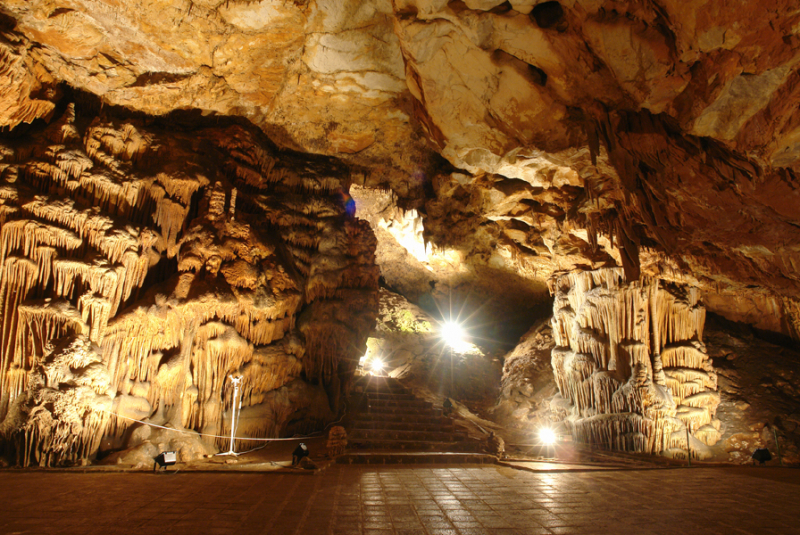
Photo: welcome.bg -
The Devetashka Cave is right up there with the best caverns in Bulgaria. It's a breathtaking karst cave in north-central Bulgaria, just a short drive from major tourist attractions like Veliko Tarnovo. The cave, which is also known as Oknata and Maarata, is famous for the seven holes in its ceiling.
This allows natural light to flood in, brightening the room. The Devetashka Cave has been inhabited by humans since prehistory because of its mix of shelter and abundant light. Human presence has been documented as far back as 70,000 years ago. It now serves as a haven for 30,000 bats, 30 different animal species, and over 80 bird species.
This cave was used in the filming of The Expendables 2 in 2011. Several environmental laws were broken, local vegetation was damaged, and thousands of bats were displaced as a result. However, around a year later, the majority of the bats returned to the cave.
Region: Devetaki, Bulgaria
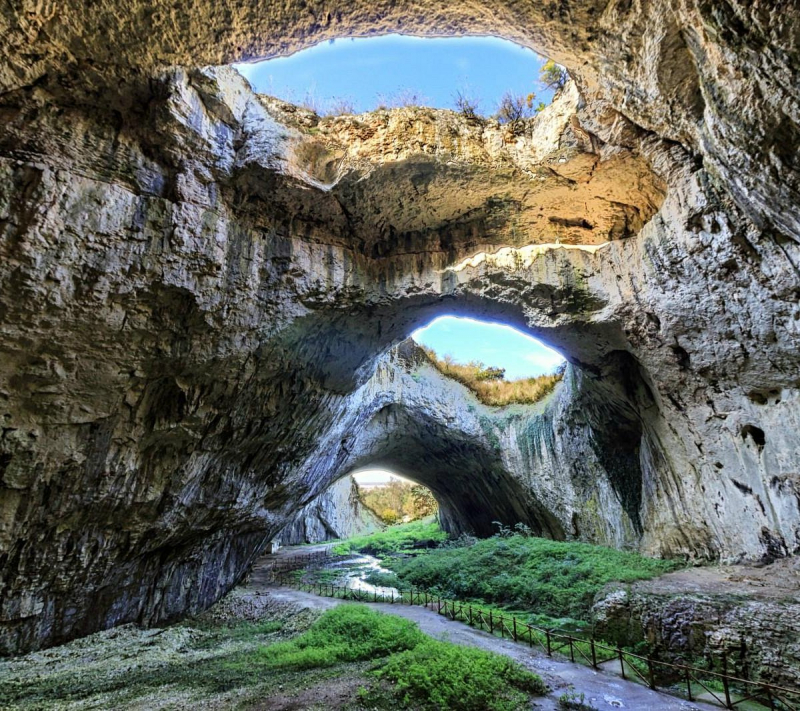
Photo: tripadvidor 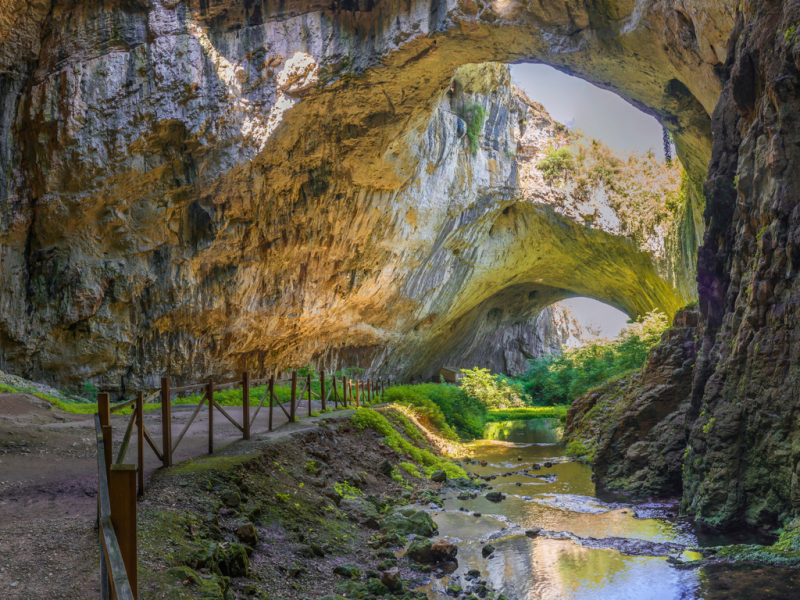
Photo: awesomeplacestovisit -
Orlova Chuka is a cave situated in the Danubian Plain, north-eastern Bulgaria. With a total length of more than 13 kilometers, the Orlova Chuka Cave is Bulgaria's second-longest cave. It was discovered in 1941 and opened to the public in 1957.
Visitors can now go through nearly 3 kilometers of hallways, corridors, and tunnels. Visitors can enjoy calcite crystals, stalactites, and sinter formations in this accessible section, which is lighted.
The Orlova Chuka was constructed during the late Pliocene and early Quaternary periods, when it was the bed of a subterranean river cut out of the local limestone and sandstone sedimentary rocks. The cave is made up of a maze of tunnels and chambers. Because of the subterranean eddies, the ceiling is mostly smooth.
The Concert Hall, the Big Stalagnate, the Little Chasm, and the Golemite Sipei Hall, the cave's largest hall, are the cave's principal attractions. The sinter lake Izvorcheto (the Spring) and its white stalagmites are another notable site.
Region: Dve Mogili, Ruse Province, Bulgaria
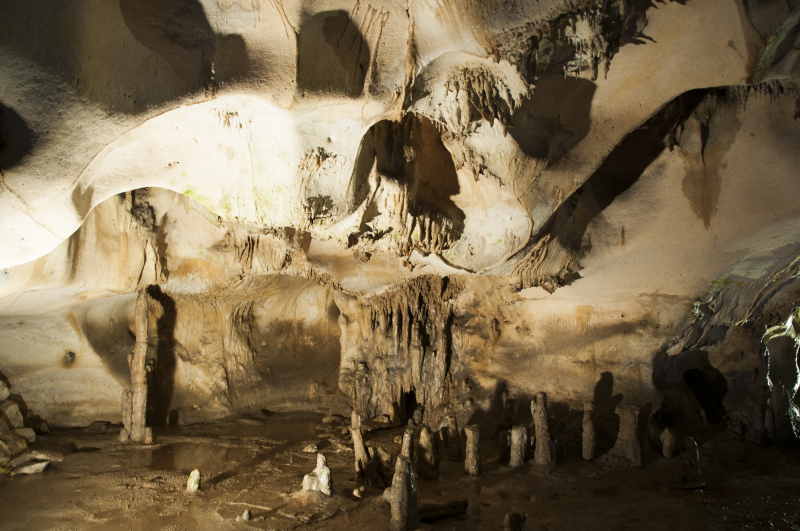
Photo: commons.wikimedia 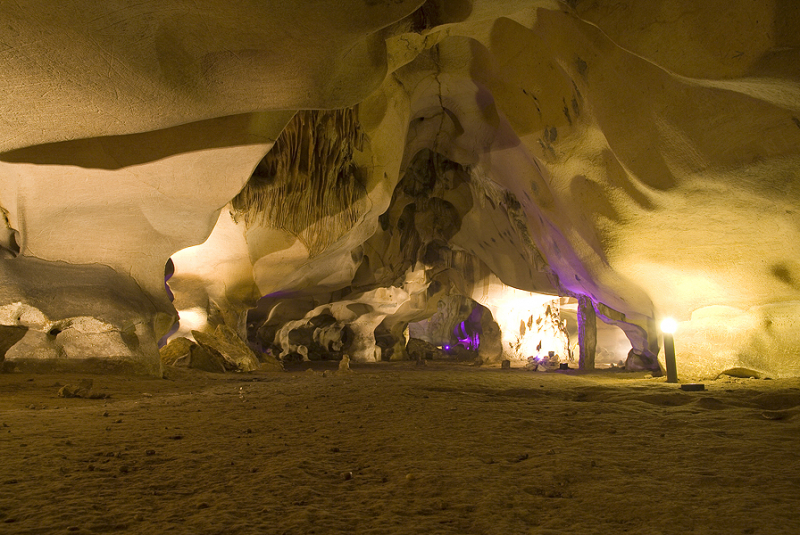
Photo: welcome.bg














